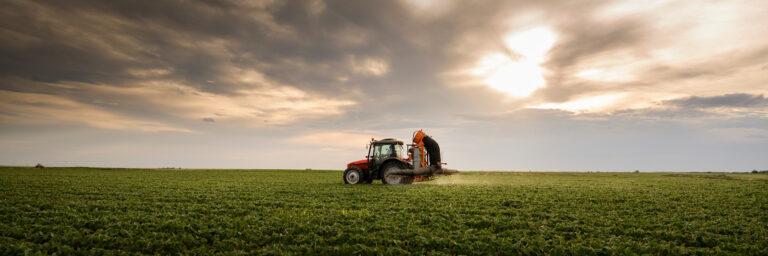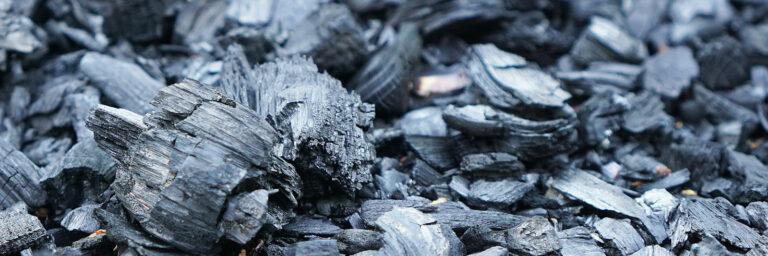
April Business Update: SRUC
After two years of operation as a Limited Company, Agrecalc became part of Scotland’s Rural College (SRUC) as of 1 April 2025.
It’s no news that recent months have seen fertiliser prices skyrocketing to wholly unprecedented levels, propelling a need to reduce fertiliser dependency in both the near and slightly longer term.
This development has made an already difficult situation for farmers significantly worse. We must consider what individual farmers can do to soften the blow and adapt to new circumstances as farmers have had to do before and will no doubt have to do again into the future. The following are some of the mitigation measures aimed at reducing artificial fertiliser dependency.
Soil testing should be part of a regular routine, however it has recently become several times more important with the sky-high fertiliser prices. Testing your soil allows you to see exactly what your soil is or is not in need of. Without soil test results, you are essentially guessing in what you apply, which is not a good strategy if you want to reduce your fertiliser dependency. In a year like this we need to be far more strategic about any use of fertiliser and use only what is crucially needed.
When you see the results of you soil test, you may be able to take a ‘P & K holiday’ if you have built strong soil indexes in the past few years. However, it may be that some of your soil indexes will not be in a position to take a ‘P & K holiday’. This would not be a year to build on these poorer soil indexes, and it would be better to just apply what is necessary to meet the requirements of the crop growing in the current year. Soil sampling gives you the essential data to make all of these strategic decisions and forms the basis of your crop nutrition approach.
Liming is an absolutely critical practice in the farmer’s toolbox to reduce the application of fertiliser, and the dependency it creates. Optimising soil pH is an essential first step to increasing N use efficiency. Your soil test will give insight into the lime requirement specific to your land, however generally more acidic soils will require more lime. Lime not only potentially leads to an increase in the efficacy of your fertiliser, but is also significantly cheaper than buying more fertiliser.
The window to apply lime to the land is a factor also, there is likely to be a cover of grass on many paddocks around this time of year. However after the first round of grazing or the first cut of silage, there is a good opportunity to apply when covers are low. Although the benefits of liming are realised much more slowly (potentially over a few years) as opposed to the instant response form fertiliser, you will almost certainly thank yourself down the road with no sign of relief in fertiliser prices in the foreseeable future.
See Technical note TN656 from researchers at SRUC for more information and guidance on liming.

For livestock farmers, where grass makes up a large part of their animals’ diet, it is essential to use that grass very efficiently and get the most out of it. If you are spreading expensive fertiliser on your grassland, you absolutely must maximise its utilisation. Any waste on this front will cost even more this year given the increased cost in inputs to grow the grass. There is a strong argument to be made that on farms where grass makes up a key part of the animals’ diet, that farmers should be grass measuring as standard.
Understanding the data around how much grass you are growing week to week, what covers are on various paddock, how much grass you have on hand in relation to your feed requirements (in the near term and for winter forage) and forecasting what you are likely to need going forward is essential. For a grass-based business this is critical information that feeds into a strategic fertiliser approach. A good way to get started is the use of a plate meter and a grass measuring app to keep track of the data for different paddocks. This should be coupled by a routine grass walk of all your grazing and silage ground on a regular basis in peak growth season.
The use of legumes in the grass sward, as a companion crop or as part of a rotation, is one of the best tools available to the farmer to reduce N requirements. Legumes have the potential to biologically fix in excess of 250 kg/N per hectare, per year and also supply N to subsequent crops (Eory et al., 2019b), representing value through saving on nitrogen in a year like this. The effect of legumes in the grass sward on N becomes substantial above a clover content of around 20%-30% in the sward. However, there are a few things to be aware of before attempting to incorporate the use of legumes into your system, e.g., clover (one of the most popular legumes for incorporating into the grass sward).
Firstly, soil fertility must be optimal for the establishment of clover in the sward (soil pH 6.2-6.5, soil P index 3 or 4, soil K index 3 or 4) (Teagsc 2020). Secondly, in order to keep the clover in the sward once it’s established, requires careful grassland management, for example a paddock grazing system where each paddock is grazed within 3 days on an 18 to 21 day rotation and grazing down to 4cm to let light down to the stolon. It’s also important to mention that after establishment, not only do these legumes reduce the N requirement, but it is actually critical that you do trust in the process and cut back on N application for the survival of these legumes in the sward. A full reseed is probably best to increase the chances of successful establishment as older butty pasture will make it difficult for establishment of clover. But if the field has been reseeded in the last few years, it can be over-sown too, as long as conditions are suitable.
When it comes to looking at slurry in the context of what has happened regarding the price of fertiliser, whatever the change in the price of buying in N, P, & K in the form of synthetic fertiliser, can be applied to the value of what is sitting in your slurry pit / store. When the price of buying these nutrients soars, so does the value of the nutrient assets we have on the farm already. In light of this fact, it’s crucial that we use these on-farm nutrients more efficiently than ever.
The first step is to get your slurry tested, similarly to your soils. If you are not testing your slurry, you are guessing as to what nutrients are in it. If you test your slurry and use that information in conjunction with requirements highlighted in your soil test, you can be very targeted in your application of that slurry, which allows you to be more strategic in purchasing fertiliser to supplement the slurry application to meet requirements. Relative to the value of the information that you get back from your slurry testing, it is quite a cheap initiative and helps drive strategic decision making on the farm.

After two years of operation as a Limited Company, Agrecalc became part of Scotland’s Rural College (SRUC) as of 1 April 2025.

Biochar is a carbon-rich material produced by pyrolysing biomass, which offers a variety of potential agronomic benefits. In this guest article, Black Bull Biochar discusses how these effects work together to bolster productivity, sustainability, and resilience in farming.

The Agrecalc team is looking forward to welcoming you at our stand (2.844) at this year’s Low Carbon Agriculture Show, taking place on March 5 and 6, at NAEC Stoneleigh near Kenilworth.